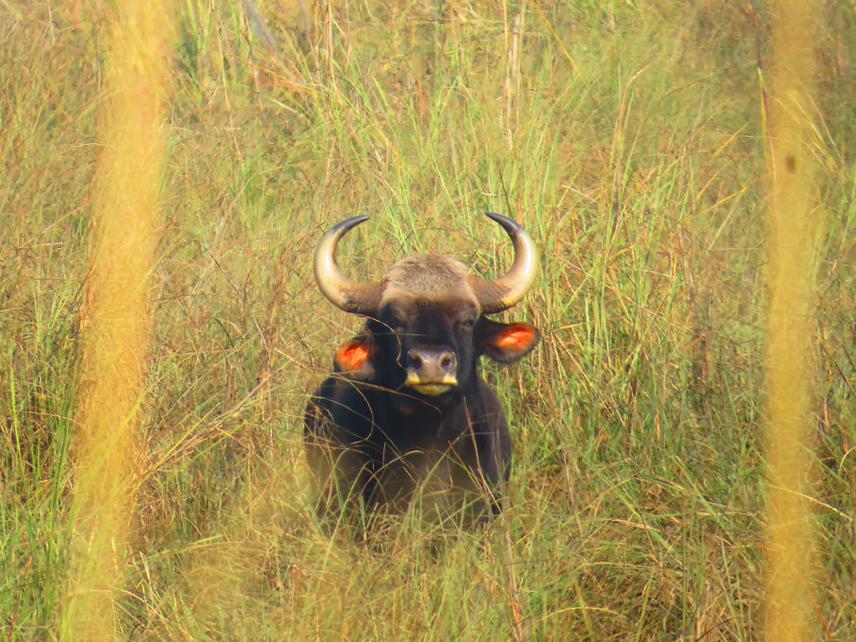Kiran Poudel
The Gaur (Bos gaurus), the largest wild bovid, is currently categorized as "vulnerable" on both the IUCN (International Union for Conservation of Nature) and the national red list. These remarkable creatures are predominantly found within the Sal forests situated in the Churia foothills of Chitwan and Parsa National Park in central Nepal, as well as the Trijuga Forest in the Udayapur district (DNPWC, 2020; Jnawali et al., 2011).
Despite the positive conservation efforts benefiting other endangered species in Nepal, the Gaur remains vulnerable to various threats, including poaching, habitat degradation, fragmentation, zoonotic diseases, and the impacts of climate change due to a lack of in-depth research on their ecological and behavioral aspects.
To address this pressing issue and enhance the long-term survival of this vulnerable species, we aim to conduct an extensive project. Our objectives include studying the ecology and habitat dynamics of the Gaur, assessing their social and religious significance, and carrying out habitat suitability modeling for the species. Furthermore, we will work towards internalizing a Gaur conservation program at both local and national levels in Nepal.

Single bull Gaur © Kiran Poudel.
This project aligns with the Gaur Conservation Action Plan for Nepal (2020-2024), which envisions the conservation of Gaur populations and their habitats through various studies and conservation measures. Our specific contributions to this vision include:
1. Assessing Gaur habitat occupancy, abundance, and distribution in Nepal.
2. Conducting habitat suitability modeling for the Trijuga Forest.
3. Exploring the ethnic, religious, traditional beliefs, and value systems associated with Gaur.
4. Identifying conservation priority areas.
5. Raising awareness and involving local communities in Gaur conservation efforts.
The project will be carried out within the Chitwan-Parsa Complex, encompassing Chitwan National Park, Parsa National Park, and the Trijuga Forest in the Udayapur District, which are vital Gaur habitats in Nepal. These areas are known for their rich biodiversity and play a crucial role in preserving ecosystems and maintaining a balance in the region.
Ultimately, our goal is to contribute to the objectives outlined which will be achieved by gathering comprehensive data on Gaur, raising awareness among local communities, and engaging stakeholders at national and community levels, culminating in the protection and sustainable conservation of this magnificent species.
Header: A group of Gaur grazing in their natural habitat © Yam Mahato.